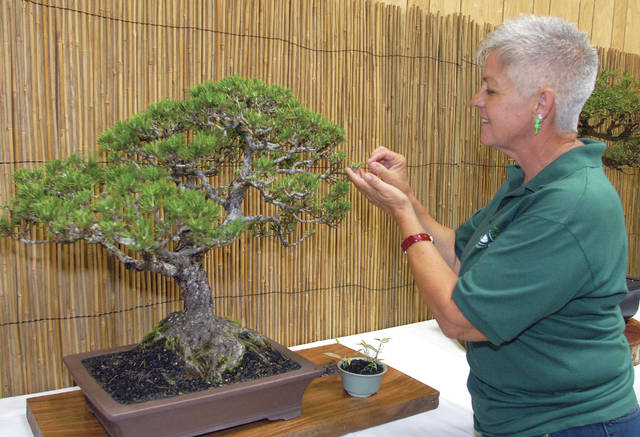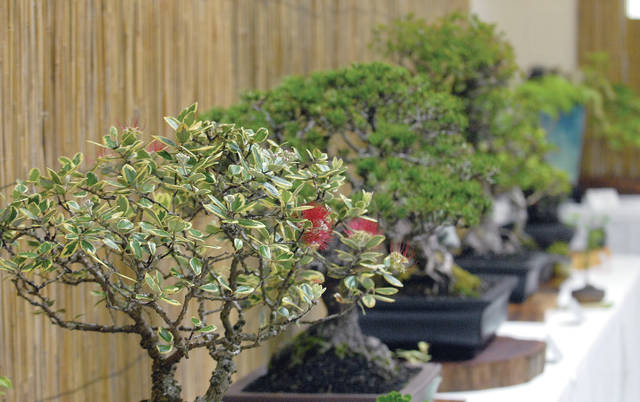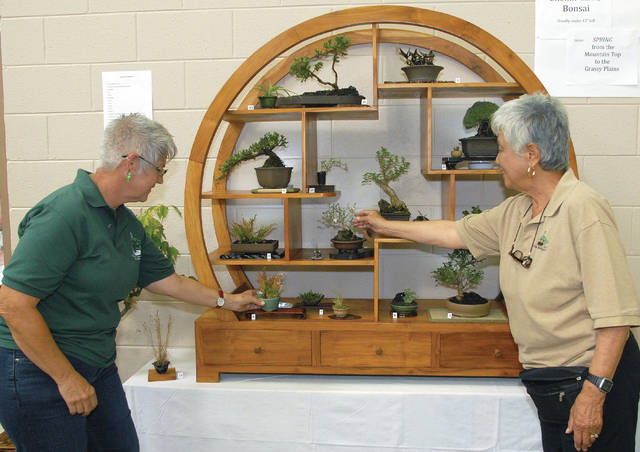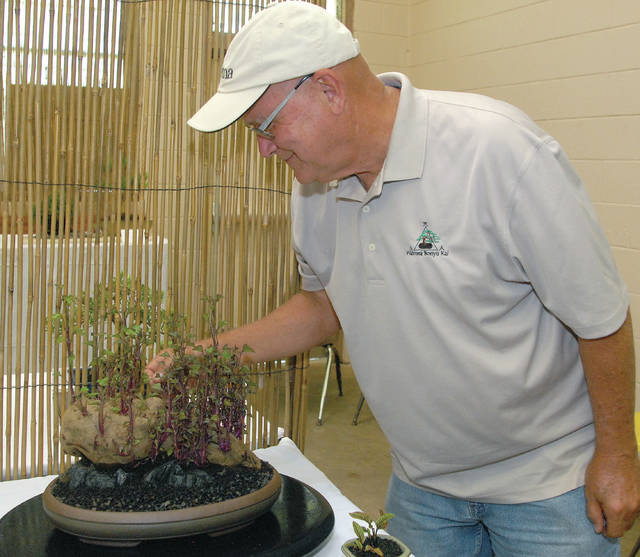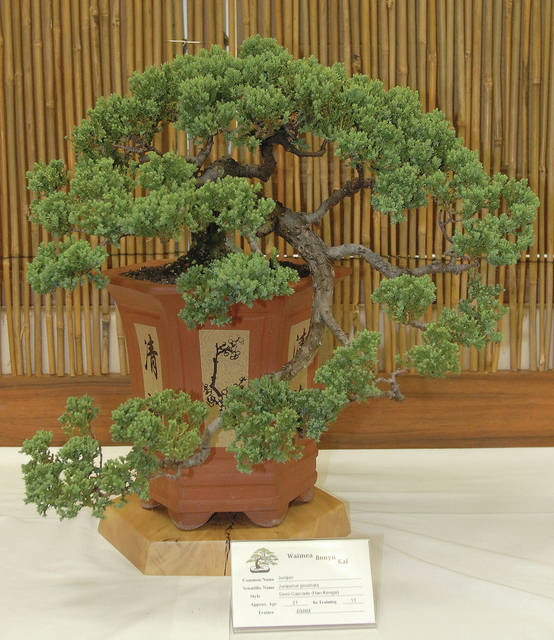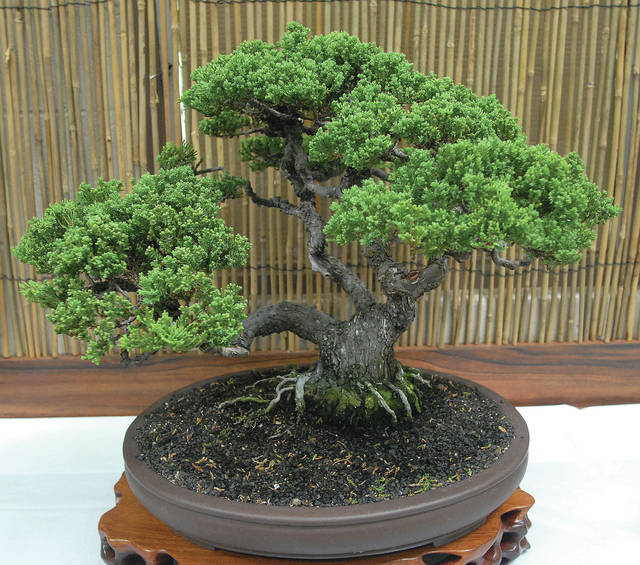WAIMEA — They may be small, but they’re a big deal. ADVERTISING WAIMEA — They may be small, but they’re a big deal. “It’s nature in miniature,” said Nancy Male, secretary of the Waimea Bonyu Kai Bonsai Club at the
WAIMEA — They may be small, but they’re a big deal.
“It’s nature in miniature,” said Nancy Male, secretary of the Waimea Bonyu Kai Bonsai Club at the organization’s annual exhibition on Saturday.
The exhibition featured dozens of bonsai displays, from the traditional Japanese black pine and juniper to jaboticaba, ohia and even a sweet potato — more on that later.
Male has been doing bonsai with her husband for about 12 years, she said at the exhibition, which was held at the Waimea Community Center.
“It is an art form,” she said, “and it’s one we just were pulled toward.”
And it isn’t just any art form, she said, it “is a living art.”
“I only wish that we could have a tree and it would stay in perfect shape all of the time,” she said with a laugh. “And that’s part of the challenge.”
For example, she explained that a now lush and leafy dawn redwood was devoid of any leaves just a few weeks ago.
“So you’re waiting and praying that it’s going to leaf out,” she said.
Lillian Paiva, a 25-year member of the organization explained that their group puts a priority on sharing the culture and knowledge.
“The friendship is as important as the plants to us, the camaraderie” she said.
Paiva said her interest in bonsai goes all the way back to a California county fair she attended when she was about 8 years old.
“I love miniatures, anything miniature, anything tiny,” said Paiva. “And I said ‘Someday I’m gonna do that.’”
As a gardener and plant lover, she said, it’s “a perfect combination.”
Rick Davis, who has been doing bonsai since the early 1990s, said it’s always been an interest of his, recalling as a kid checking out books on bonsai and Japanese gardening.
“I think I’ve been drawn to it ever since elementary school libraries,” he said.
And bonsai is also a draw even for those who just want to look at them.
“I think because they evoke such a feeling of nature,” Paiva said. “And human beings are connected to nature. It’s a universal feeling.”
There can also be a nostalgia factor as well.
“Sometimes it even takes them back, it reminds them of somewhere where they grew up or somewhere they wanted to be,” she added.
Throughout the exhibition, visitors walked around and admired the various plants as members of the club explained the intricacies of the art of bonsai.
Ceppie and Irwin Federman said they dropped in after seeing signs for the day’s exhibition.
“This is art,” said Irwin Federman. “I mean it’s gorgeous. Every one is a unique work of art.”
“It’s a real ‘Wow’” added Ceppie Federman.
The two said it’d be impossible to pick any one plant as their favorite.
“I think every one of them is unique and beautiful in itself,” Irwin Federman said. “I think it would be a big mistake to try to pick the best or the nicest. I think you’d miss the whole point of it.”
George Bowers of Waimea brought his children to the exhibition on his way back from the market, saying he wants to instill a respect for a culture with “universal aesthetic appeal.”
Bonsai has practical lessons as well, saying his kids have done some bonsai in the past.
“But the trick with bonsai is that the beauty of it is there is no instant gratification,” he said. “And it teaches them patience, perseverance and a relationship with the project that’s ongoing.”
Bowers said his favorites are the ohia, but he also likes seeing things that “you don’t normally see bonsai’d” like non-native plants.
One plant definitely not traditional to bonsai was the sweet potato on display at the exhibition.
Davis said the tuber came out of his garden about three months ago, “and it was way too big, too fibrous to eat.”
“So I just set it on the table and the next thing I knew, it looked like a forest,” he said laughing. “So I said, ‘Oh, I’m gonna make this the joke of the show and make it into a forest.”
There was no pruning or styling involved with the plant, he said.
“That’s totally a natural potato forest,” he said.







